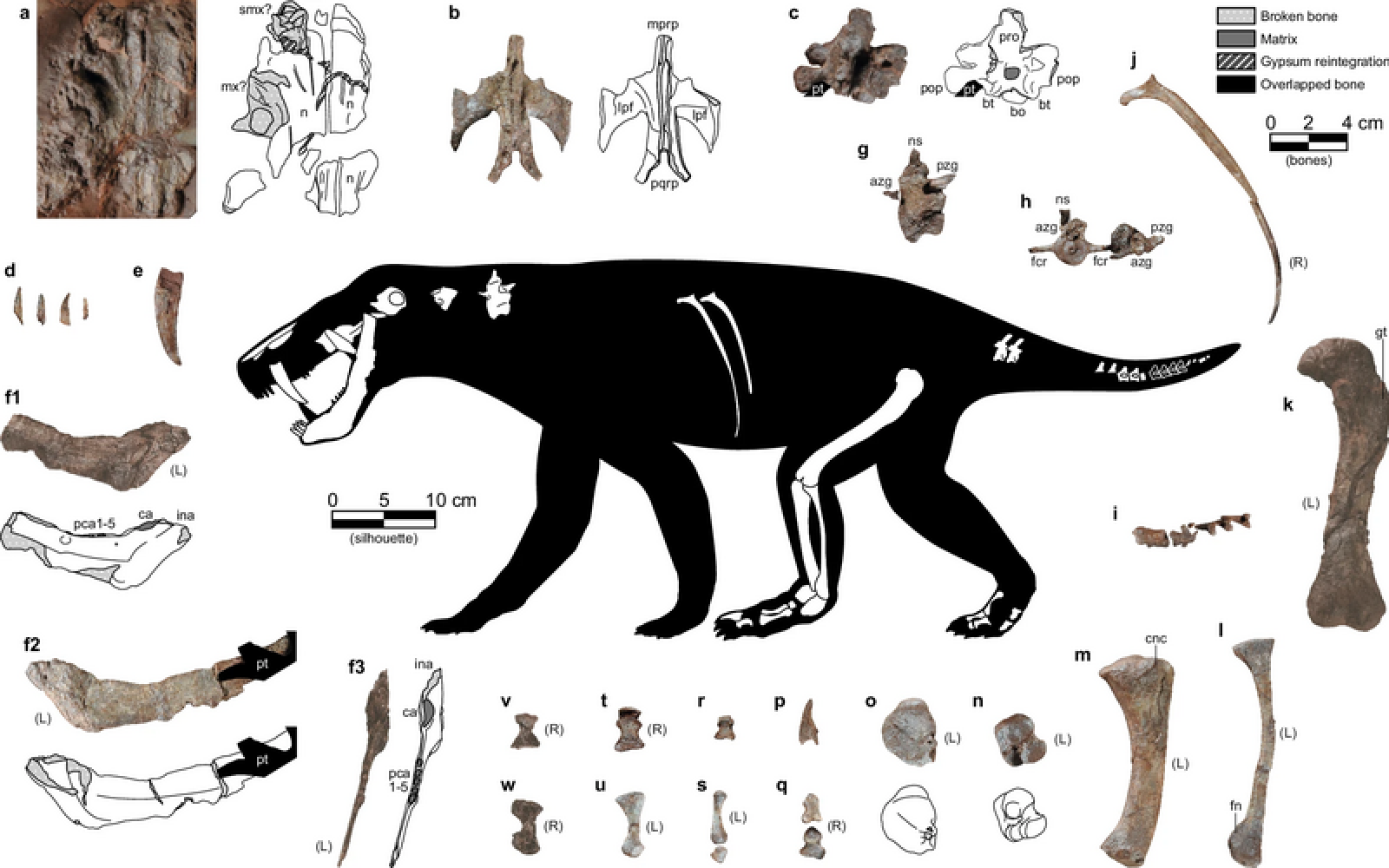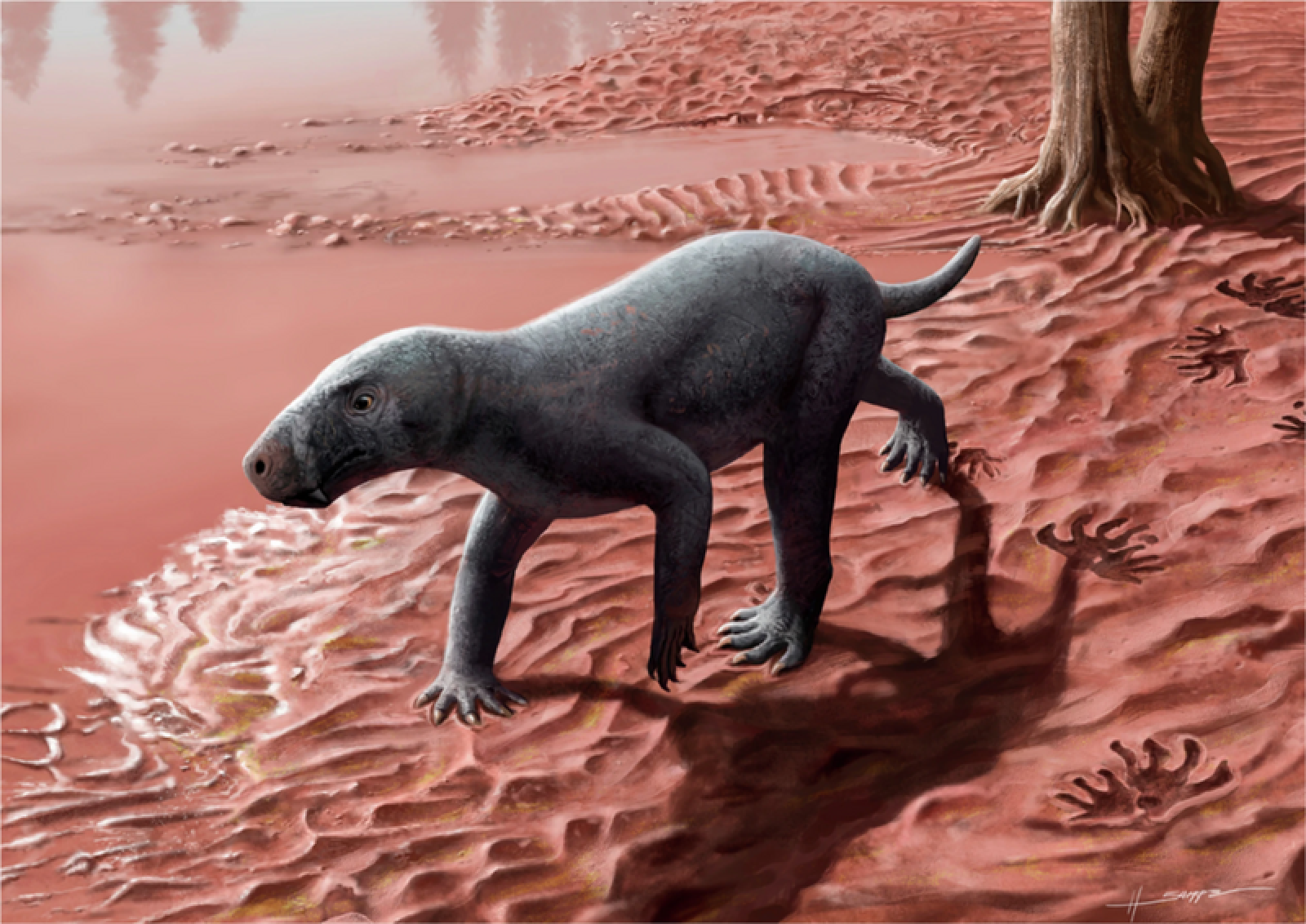Fossil discovery of the oldest ancestor of mammals 🦴
Published by Cédric,
Author of the article: Cédric DEPOND
Source: Nature Communications
Other Languages: FR, DE, ES, PT
Author of the article: Cédric DEPOND
Source: Nature Communications
Other Languages: FR, DE, ES, PT
Follow us on Google News (click on ☆)
270 million years ago, Majorca was not an island but a part of the equatorial supercontinent Pangaea. This land, composed of floodplains, provided a conducive environment for a diverse fauna. Among these, the gorgonopsians, saber-toothed creatures, ruled as apex predators.
These animals, neither fully mammals nor fully reptiles, exhibited a unique anatomy. Their legs, positioned beneath their bodies rather than on the sides like reptiles, provided them with more efficient locomotion for hunting. The Majorcan fossil, consisting of a skull and an almost complete limb, has allowed detailed studies of these adaptations.
Gorgonopsians possessed hybrid characteristics. Although they laid eggs like reptiles, they were warm-blooded, which links them closer to mammals. Their bodies, about 3.3 feet (1 meter) long, resembled a dog without ears or fur, but with saber-like teeth.
This discovery is remarkable for multiple reasons. Until now, these predators were primarily known from fossils found in Russia and South Africa. Finding a specimen at such a low latitude, in southern present-day Europe, expands the understanding of their geographical distribution.
Excavations in Banyalbufar, conducted by Catalan and Balearic teams, also revealed that this individual is the oldest of the gorgonopsian group. Analyses estimated its age between 270 and 280 million years, making it the most ancient specimen ever identified.

a) Snout fragment: maxilla (mx), nasal (n), septomaxilla (smx)
b) Pterygoid: lateral pterygoid flange (lpf), median palatal ramus (mprp), posterior quadrate ramus (pqrp)
c) Basicranium: basioccipital (bo), basal tubercle (bt), prootic (pro), paroccipital process (pop)
d-e) Teeth: incisor alveoli (ina), canine alveolus (ca), postcanine alveoli (pca)
f1-3) Left mandible:
g) Cervical vertebra?: prezygapophysis (azg), postzygapophysis (pzg), neural spine (ns)
h-i) Caudal vertebrae: fused caudal ribs (fcr), transverse process (tp)
j) Right dorsal rib
k-m) Hind limbs: left femur (k), left fibula (l), left tibia (m), fibular notch (fn), greater trochanter (gt)
n-o) Left tarsus: left astragalus (n), left calcaneum (o)
p) Claw
q) Right metatarsal and phalanges:
- First metatarsal (q, bottom), first phalanx of right digit I (q, top)
- Penultimate phalanx (r)
- Left distal tarsus (s, bottom), left metatarsal of digit III (s, top)
- First (t, bottom) and second (t, top) phalanges of right digit IV
u) Left fourth tarsus
v) First phalanx of right digit V
w) Right fifth metatarsal
Image Wikimedia
During the Permian, gorgonopsians shared their habitat with herbivorous reptiles such as captorhinids. The latter, often smaller, represented ideal prey for these fast and well-equipped apex predators. The diversity of fossils found in the Balearic Islands highlights a paleontological richness often underestimated.
Beyond the Permian, the fossil record of the Balearic Islands spans other epochs, such as the Pleistocene, with ancestors of hippos and even prehistoric mosquitoes. However, such an ancient discovery is rare, paving the way for research on the evolution of regional ecosystems.
The Majorcan fossil also enhances understanding of the origins of mammals. Descendants of the synapsid lineage, mammals owe part of their evolutionary success to creatures like the gorgonopsians. A memory, etched in stone, that endures despite millions of years.
What is a gorgonopsian?
Gorgonopsians were predators that lived approximately 270 to 280 million years ago, during the early Permian period. They are considered distant ancestors of modern mammals, belonging to the synapsid lineage, an evolutionary group distinct from reptiles. Although they resembled reptiles, their internal characteristics and physiology were closer to those of mammals.
This group of animals is particularly known for their saber-like teeth, a deadly asset for capturing prey. Their bodies were similar to those of a large dog, without fur or visible ears. Their size varied, but most measured about 3.3 feet (1 meter) in length. Despite their reptilian appearance, they were actually warm-blooded.
A notable feature of gorgonopsians is the position of their legs. Unlike reptiles, their limbs were more vertically aligned, enabling them to move more efficiently and hunt more effectively. These animals thus had a mode of locomotion intermediate between reptiles and mammals.
Although gorgonopsians disappeared long before the appearance of dinosaurs, their evolution played a significant role in the emergence of the first mammals. These mammals, originating from this lineage, emerged several tens of millions of years later, marking a turning point in the history of life on Earth.
Gorgonopsians are also a keystone for understanding the evolution of predators and terrestrial animal locomotion through the ages. Their study continues to provide essential insights into the adaptations of these ancient creatures to their environments.
